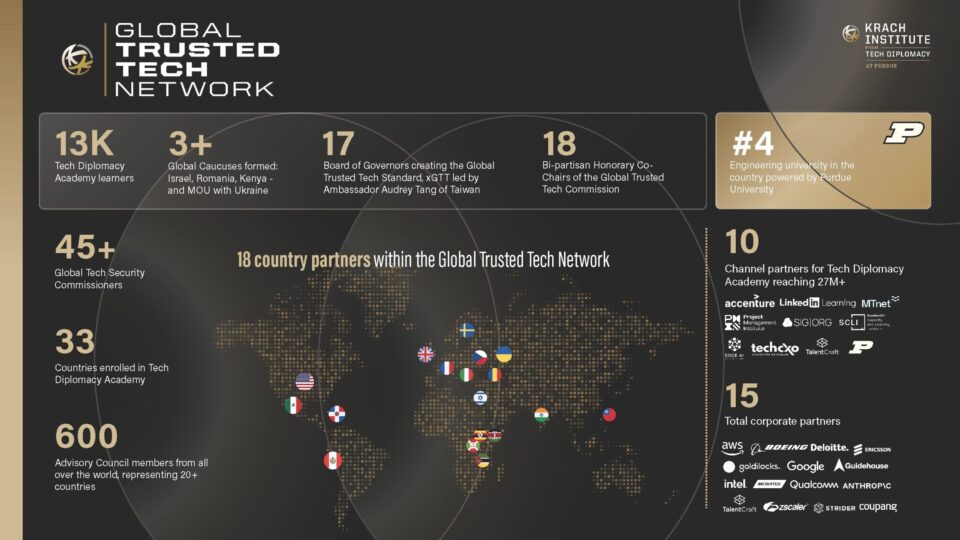What Will 6G Be Like?
Mung Chiang
07.21.21

What is the difference between 5G and 6G? That is the question that I posed to a roundtable of industry tech leaders organized by the newly established Center for Tech Diplomacy at Purdue (CTDP) in April. The five expert panelists included: Asha Keddy (VP, Intel), John Roese (Corporate CTO, Dell), John Smee (VP, Qualcomm), Jan Soderstrom (VP, Ericsson), and Chris Wright (CTO, IBM Redhat).
In this vibrant dialogue, the panelists discovered four common themes surrounding 6G
technology that underline potential applications:
- 6G will become a foundation to all other industries, not just as a wireless industry domain itself. The manufacturing industry and digital agriculture will be among the first sectors to benefit from 6G and help define its capabilities. The key feature will be how 6G connects the virtual with the physical, bringing bytes and atoms together.
- 6G will be a network of networks, not just a single network. It might enable interworking across cellular systems, WiFi system and low-Earth orbit satellite constellations. It will likely support private networks in industrial and enterprise settings as much it supports public networks for consumers. Service will be provided not only by telecom operators but also cloud operators and end-user device vendors.
- 6G will be the first wireless generation that is about improving responsiveness rather than enhancing throughput. From 1G to 4G, and in the ongoing deployment of 5G, bits per second has been the primary focus, working to make peak or average throughput higher. In 6G, the time it takes to react will be the metric to minimize — going towards 20 ms for human interface and 5 ms for machine communications — with the key ingredient being the edge: Moving computing and control closer to the sensors and actuators.
- 6G will steadily migrate toward open interfaces. Modularization has long provided the foundation for wireless network design but what makes 6G new is it how the interfaces across the modules are more open: Disaggregating the modules horizontally across the physical span of a network and decomposing the functions vertically across the so-called “layers” of network architecture.
There are government policies that can leverage and in turn accelerate these trends. For example, the panelists agreed on the need for the following actions:
- The U.S. government needs to release more mid-band spectrum as soon as possible, while maintaining a balance between licensed and unlicensed spectrum. It should also encourage the experimentation with dynamic spectrum sharing that can further maximize the efficiency of spectral usage all the time.
- The U.S. government should encourage more public-private partnership, especially in experimental deployment beyond fundamental research or lab testing. It should also broaden the talent pipeline and accelerate workforce training in all dimensions of the wireless industry.
- The U.S. government should invest more to catalyze collaboration among likeminded nations, including in international standard-setting bodies.
This roundtable will be followed up with a yearlong 6G Global Roadmap study starting summer 2021.

